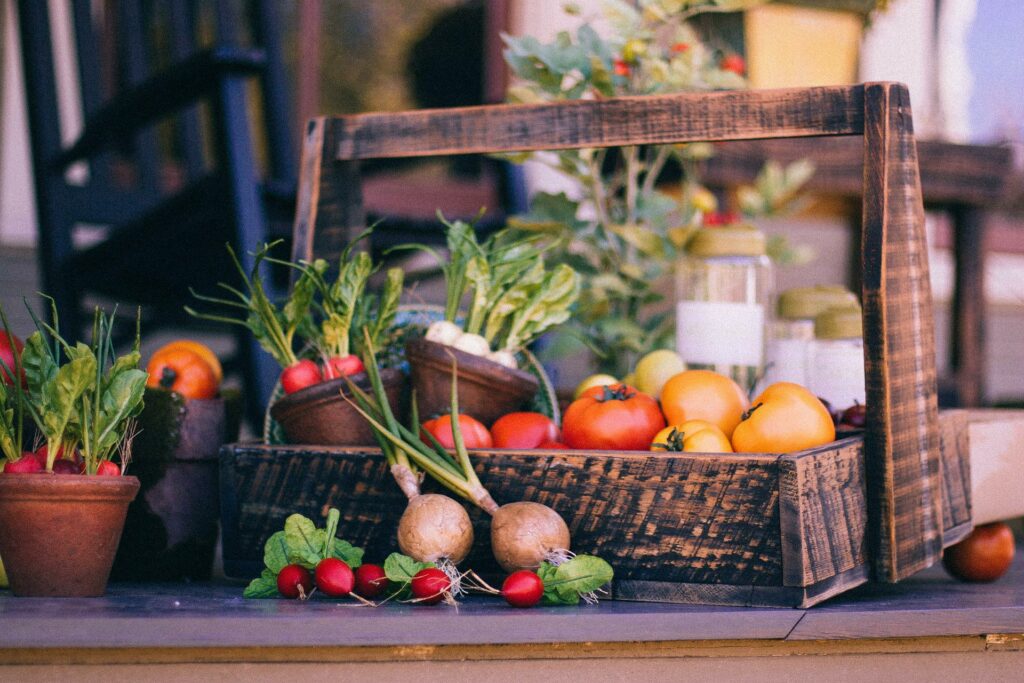Starting your Own Vegetable Garden
Benefits of Planting & Picking your own vegetables:
Improving your health – It helps you eat more fresh fruit and vegetables. You are also completely in control of type of soil you use, type of fertilizer, avoiding unwanted pesticides in your food, and when to pick your own food.
Save money on groceries – There is no argument that prices are increasing in our current economy, and shopping for healthy food is more expensive than ever. Cut these costs down by growing your own, whether from seed or from transplanting into your garden beds.
Outdoor Exercise – Taking care of your vegetable garden, depending on how extensive your garden is, can be a great way to get some physical exercise and vitamin d in. Getting your kids involved is even better!

Preparation & Location:
The key to starting a vegetable garden, and keeping with it, is planting things you actually like – and want to eat! Start small to not overwhelm yourself. This will motivate you to continue to grow vegetables, and even branch out to new plants to expand your knowledge. Here are the basic tools & tips you will need to prepare your vegetable garden:
- Where to plant? – In a sunny spot – Vegetables do best in full sun. 8 hours is best, but you want at least 6 hours of sun exposure.
- Preparing the soil – Preferably high quality soil with nutrients is best, but you can plant with top soil, mixed in with some nutrient soil. Organic soil is even better! Visit your local garden center, like Moscarillo’s!, to speak with our experts on what would work best for your plot – you can buy bagged soil, or have it delivered in bulk.
- Start by removing all the weeds and grass from underneath your soil, down to the root – remove any existing plants – good soil prep helps with better harvest yield.
- Till the soil (this means breaking up crusted soil, loosening it up for planting) by turning over the soil with a garden shovel, about 8” deep.
- Add your soil mixture (typically a mix of topsoil and compost) to the area you are gardening, or into your garden bed.
- Smooth out the area evenly with your rake, and you are ready to plant. The vegetables you purchase will include instructions on their care cards of how and when to plant.
List of basic tools needed to plant:
Vegetables – Purchase the plants you want to grow. Make sure to follow packet instructions!
Topsoil – You will need topsoil for your plants to grow in – you can buy in bulk or bagged.
Compost – Packed with nutrients for your plants, and increase’s soils ability to control water.
Plant Food – Apply a balanced fertilizer for your specific veggies to help them grow stronger!
Gloves – This might be a no-brainer, but pick a good pair of garden gloves to help you plant!
Shovel – You will need a shovel to get those veggies and your soil into the ground/raised bed.
Rakes – For larger gardens, you will need to evenly rake out soil you purchase prior to planting.
Plant Stakes – Use these to identify what your plants are during their early growth!
Access to Water – Also a no brainer, make sure you are able to bring water to your garden
Raised Bed – For ease of planting and maintenance, consider buying or making a raised bed!
Consider Community Gardens in your Area:
Not everyone has the space to have a garden – And a lot of people don’t know that you can likely find a community garden in your town or city that will allow you to have or purchase a plot for a season to grow your own vegetables on a dedicated space! They usually run from mid-April to October, but it will be dependent on your town or the organization you go through to get one of these plots.
- West Hartford: https://www.westhartfordct.gov/town-departments/leisure-services/westmoor-park/community-gardens
- Farmington: https://www.farmington-ct.org/community/kolp-community-garden-plots
- Avon: https://www.farmingtonwoods.com/Community_Lifestyle/Cooperative_Garden
- Simsbury – https://simsburyct.myrec.com/info/activities/program_details.aspx?ProgramID=10166
